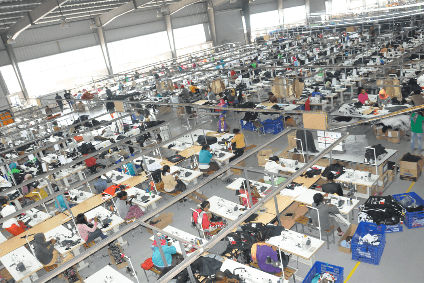
It takes more than cheap labour to produce competitively priced clothing – and the re:source by just-style online sourcing tool lets us quickly measure and compare how labour costs stack up for the world’s top 25 clothing supply countries.
Labour Costs Compare Across 25 Top Supply Countries
There’s a correlation between labour costs and the price of garments. That’s sort of a no-brainer in our business. In fact for many manufacturers, cheap labour plays a significant role in whether a company can cut it in today’s market or not.
Moreover, there’s been a lot of talk about China’s competitiveness. Higher labour costs are often cited as the main culprit. As the Chinese economy developed, wages would naturally increase along with the prices for many supply chain essentials, such as yarn or fabric. Sorry folks, in our business labour is a commodity along with raw materials – or perhaps I should say labour cost is a commodity like any other input into the garment supply chain.
And, of course, the latest round of tariff slinging between the US and China has many companies actively looking for alternative sources of supply. Trump has told the American public that a tariff war with China is easy to win and that because of his efforts, jobs will return to the US from China. As long as American consumers insist on paying for as little as possible for their clothes, I seriously doubt a trade war between the US and China will result in jobs flooding back to the US.
A trade war could result in some jobs migrating as sourcing companies switch to suppliers in other countries to avoid being caught in a tariff cross-fire
However, a trade war could result in some jobs migrating as sourcing companies switch to suppliers in other countries to avoid being caught in a tariff cross-fire. Our industry has always been sensitive to labour costs, and today is no different. Indeed, over the past 30 or so years – essentially the time from when bilateral trade quotas were eliminated – sourcing companies have scoured the world to find the lowest cost of production.
But there are a lot of elements in the production of low-cost garments. Of course there’s labour, but there’s also productivity, and then there’s the cost of raw materials, the health of local economies and political environment. Transportation costs also play a significant role in pricing. And there’s a lot more. So many garment-making nations around the world boast large supplies of cheap, abundant labour. But does cheap labour alone guarantee success in world markets for apparel? In short, it takes more than cheap labour to produce competitively priced clothing.

US Tariffs are shifting - will you react or anticipate?
Don’t let policy changes catch you off guard. Stay proactive with real-time data and expert analysis.
By GlobalDataUtilising the re:source by just-style online sourcing tool, we can quickly measure how labour costs stack up for the world’s top 25 clothing supply countries. In particular, we can rank total exports but then place those export results in comparison with the number of garment factories, the average number of workers at each factory in each country, and rank the wages paid to those workers.
Although the header descriptions in the following table are self-explanatory, it is useful to take the results of one country and show how the ranking system works for each data series presented in the table. It should be mentioned that the list of apparel exporters below excludes EU countries and focuses solely on low-cost destinations exporting to large consumer markets such as the US and EU.
Let’s look at China as it is the largest exporter of apparel to the world. As it is the largest exporter, it receives a top ranking of 1.
However, when monthly garment wages are considered, China’s average wage paid to its workers (on an industry-level basis) stands at 15th best paid in the world out of 25 countries, placing China just below the mid-point of the 25 countries analysed.
In turn, for the total number of garment factories, China has the most as it’s ranked first. Finally, when the average number of workers per factory is calculated, it is quite small compared to factories elsewhere in the world. As a result, China comes in with a rank of 24 out 25 countries.
So, what can we conclude from this example? China is the largest exporter of apparel in the world, while paying higher wages than 14 other countries tracked, while maintaining a large number of factories (the world’s largest, in fact) but that these factories tend to employ less people on a per-factory basis than nearly every other country compiled for this analysis.
For many sourcing people reading this, they must be asking what’s the bottom line for China as a supplier? Simply answered: China’s apparel industry is big; it exports more than any other country; it pays better than suppliers in many other countries; but it has far more small factories in operation than its huge export performance would suggest.
Most importantly, perhaps, this also suggests that China is a very efficient supplier, undoubtedly a key contributor to the country’s success as a manufacturer and top exporter of apparel to the world.
This article has indexed the data found within re:source by just-style, the online sourcing tool that also contains lots of other key metrics for measuring the productivity, efficiencies and cost-effectiveness of suppliers around the world.



